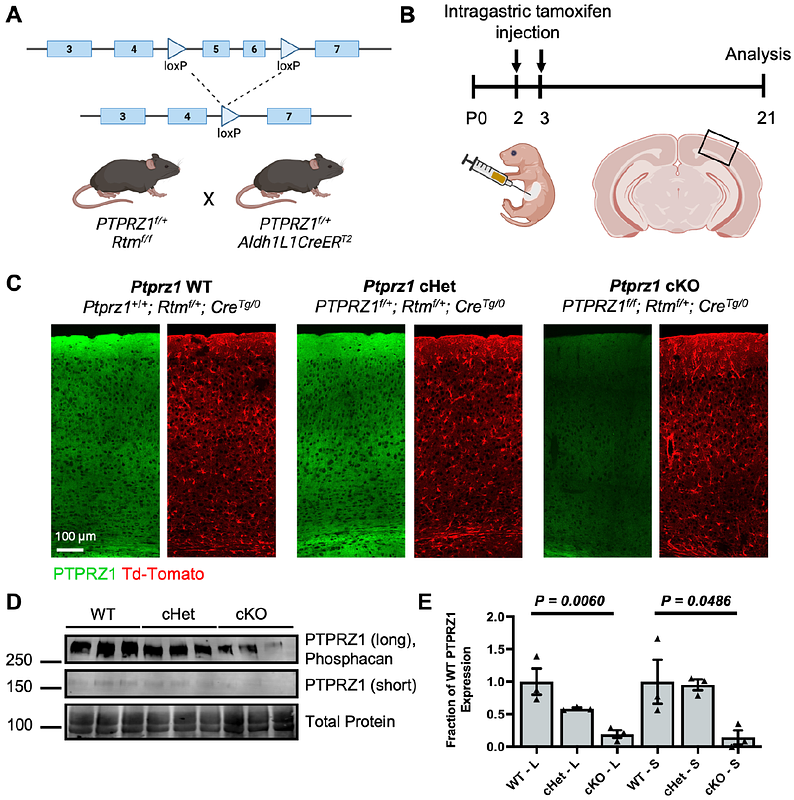Astrocyte-derived PTPRZ1 regulates astrocyte morphology and excitatory synaptogenesis

Astrocyte-derived PTPRZ1 regulates astrocyte morphology and excitatory synaptogenesis
Eaker, A. R.; Spence-Osorio, H. E.; Baldwin, K. T.
AbstractProtein tyrosine phosphatase receptor type Z1 (PTPRZ1) is one of the most abundantly expressed and enriched proteins in astrocytes during development, yet its function in astrocytes is unknown. Using an astrocyte-neuron co-culture system, we found that knockdown of Ptprz1 in astrocytes significantly impaired astrocyte branching morphogenesis. To investigate the function of PTPRZ1 in astrocytes during brain development, we generated a Ptprz1 conditional knockout mouse and deleted Ptprz1 from astrocytes postnatally, after the bulk of astrogenesis is complete. At postnatal day 21, we found defects in astrocyte morphology and a reduction in excitatory synapse number across multiple layers of the visual cortex, suggesting important functions for astrocytic PTPRZ1 in both astrocyte morphogenesis and synaptogenesis. PTPRZ1 is expressed in several neural cell types, including radial glial stem cells and oligodendrocyte progenitor cells (OPCs), and regulates critical aspects of neurodevelopment, including neurite outgrowth, neuronal differentiation, myelination, and extracellular matrix (ECM) development. Moreover, altered PTPRZ1 expression is associated with schizophrenia and glioblastoma. Therefore, this mouse model is a valuable resource for investigating cell-type-specific PTPRZ1 function in numerous neurodevelopmental and neuropathological mechanisms.